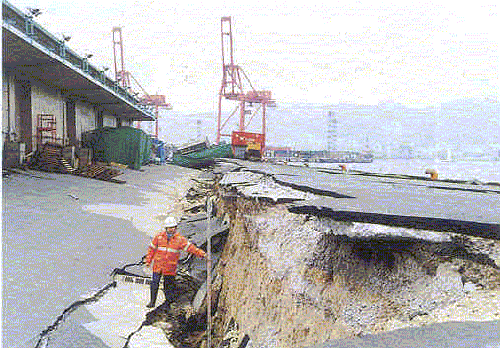
Kobe Earthquake of 1995
By: Mary, Himansu, Owen, and Riley 3/4th period Weaver



~Before the earthquake~
Japan was earthquake prone, and basically disaster prone thanks to their location on the globe. Japan and it's islands sit on top of four plates; North American plate, Pacific Ocean plate, Philippines plate, and Eurasian plate. Before the 2nd worst disaster next to the 1923 Tokyo earthquake, Kobe was a beautiful city with ports that surround the coastline. It was a normal and busy city as usual.


The country of Japan is mainly praised by its breathtaking atmosphere, and exquisite culture. Kobe is located on the island of Honshu. The city is small and narrow, and therefore dependent most of the time. Kobe are neighbors of the city of Osaka and the Rokko Mountains. Osaka is a city with ports that carry cargo in and out of the city/country. Citizens would carry on with their daily life routine.

~After the Earthquake~


~Historical Research~
The earthquake's aftermath was quite depressing, yet intriguing. The death total was 6,433 people, it had damaged 100,000+ buildings, injured at least 25,000, displaced about 300,000 people (displaced means people's homes that are destroyed and forces then to move elsewhere), and costed about $100 billion in damage. Tremors were felt everywhere that surrounded Kobe, and many aftershocks happened, the largest being 3.7 magnitude. In the 1995 Guinness Book of World Records, Kobe was listed as the costliest, most dangerous disaster in the world. Officials passed January 17th as National Disaster Prevention and Volunteerism Day. According to observations, one in every five houses were completely destroyed. In addition to the destruction, many of Kobe's power lines and transportation were down. Due to the earthquake, the Japanese stock market was under heat when a company called Nikkei 225 dropped 1,000 points in the market (and that's alot of money, considering they make nearly 10,000 yen per share. 10,000 yen ~ $125 U.S dollars). What really caused so many deaths was because that Kobe was city that was usually safe from earthquakes, so no one prepared for the disaster that happened.There is also a memorial next to Kobe City Hall of the destruction that happened that day. People would mourn for loved ones January the 17th every year. When a bridge collapsed, another one stretched. The Hanshin expressway (well... bridge like freeway for people to go through and from the city) completely collapsed, but the Akashi Kaikyo bridge was lengthened by a meter. 13 years after the earthquake, Kobe has done a significant job rebuilding, but still has so rebuilding to do. We salute to the volunteers and helpers that came to support the people of Kobe on January 17th, 1995.



Now, most of Kobe, Japan has been rebuilt, and everything resumes again. It's like a lotus flower that can blossom through mud (It's an Asian legend...)
The Kobe earthquake of 1995 was a devastating and gut wrenching event since the WWII earthquake in Tokyo back in 1923. This footage caught by a local store security camera will show you the first few seconds of destruction throughout Kobe, Japan.
